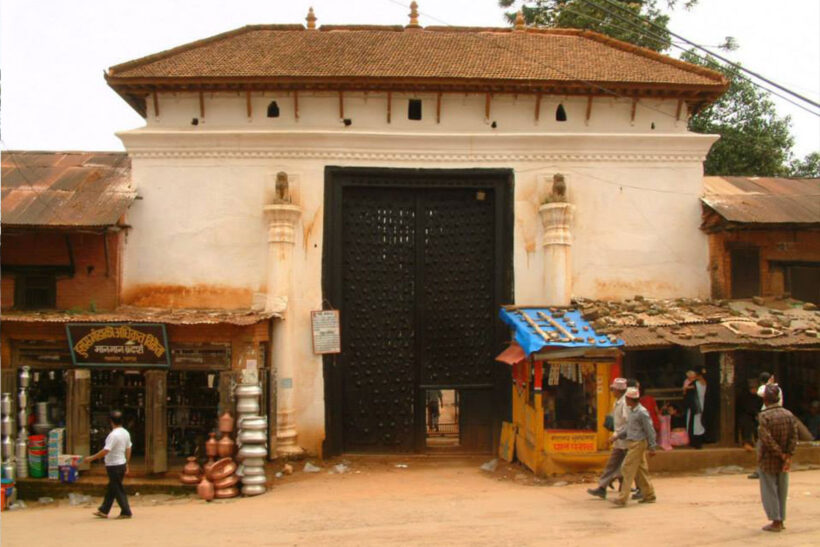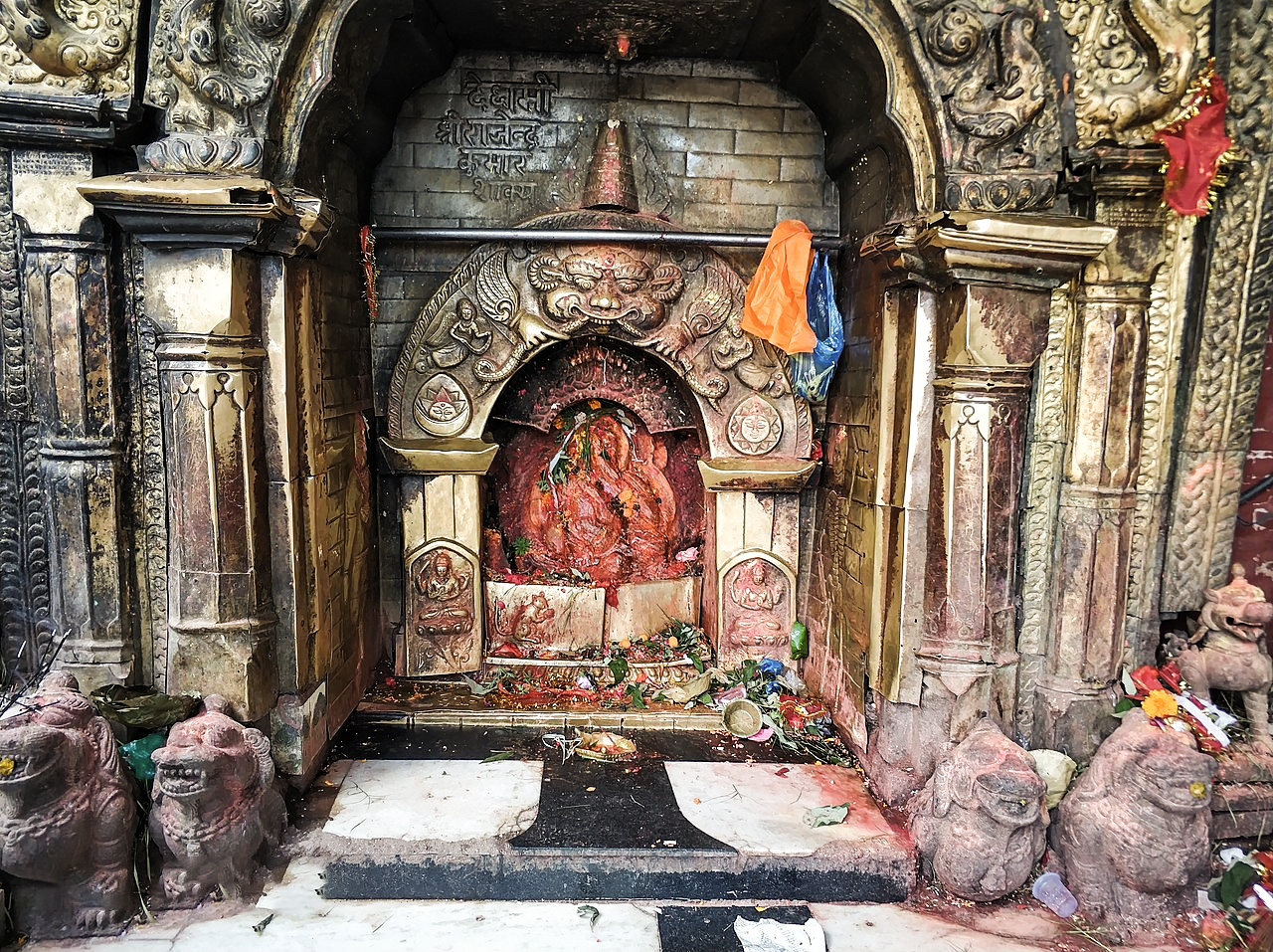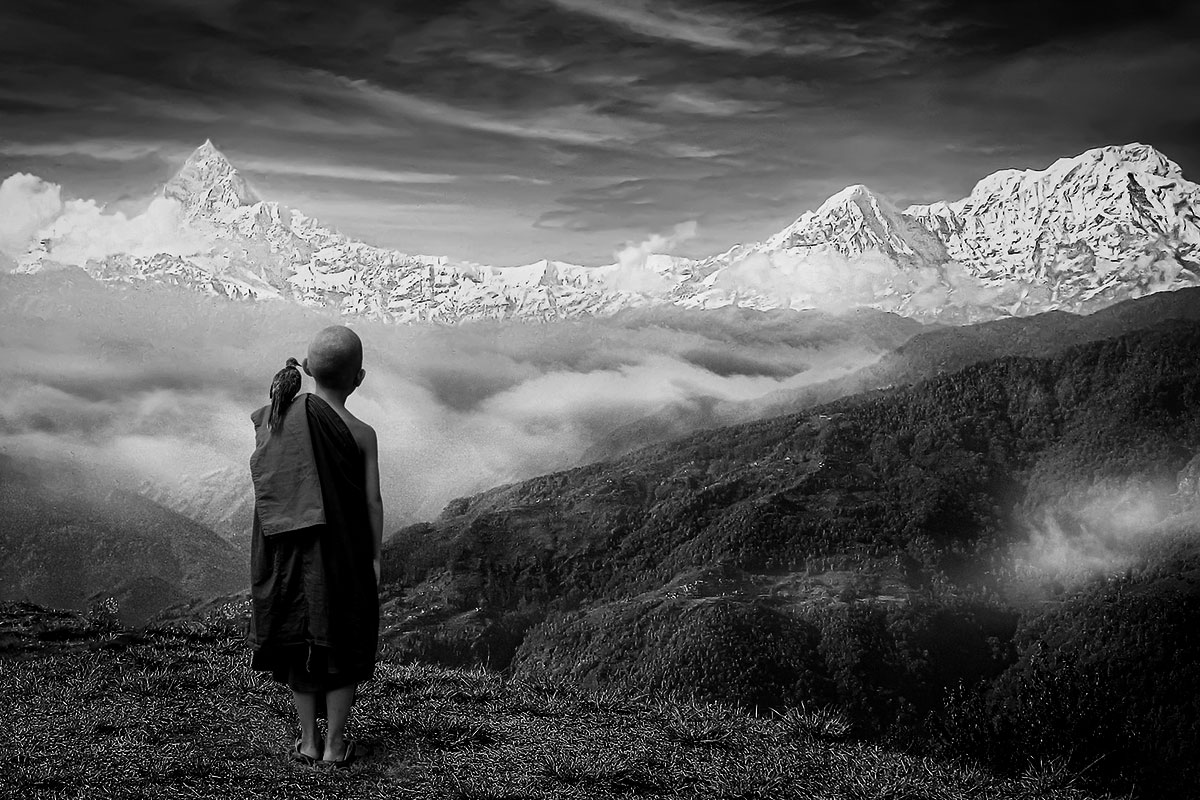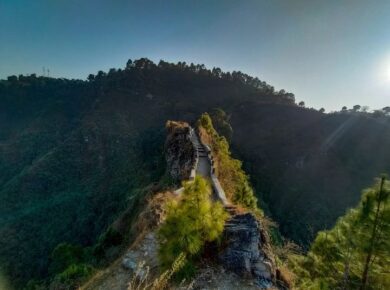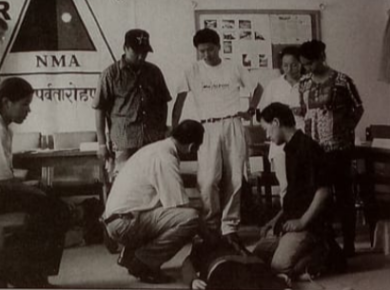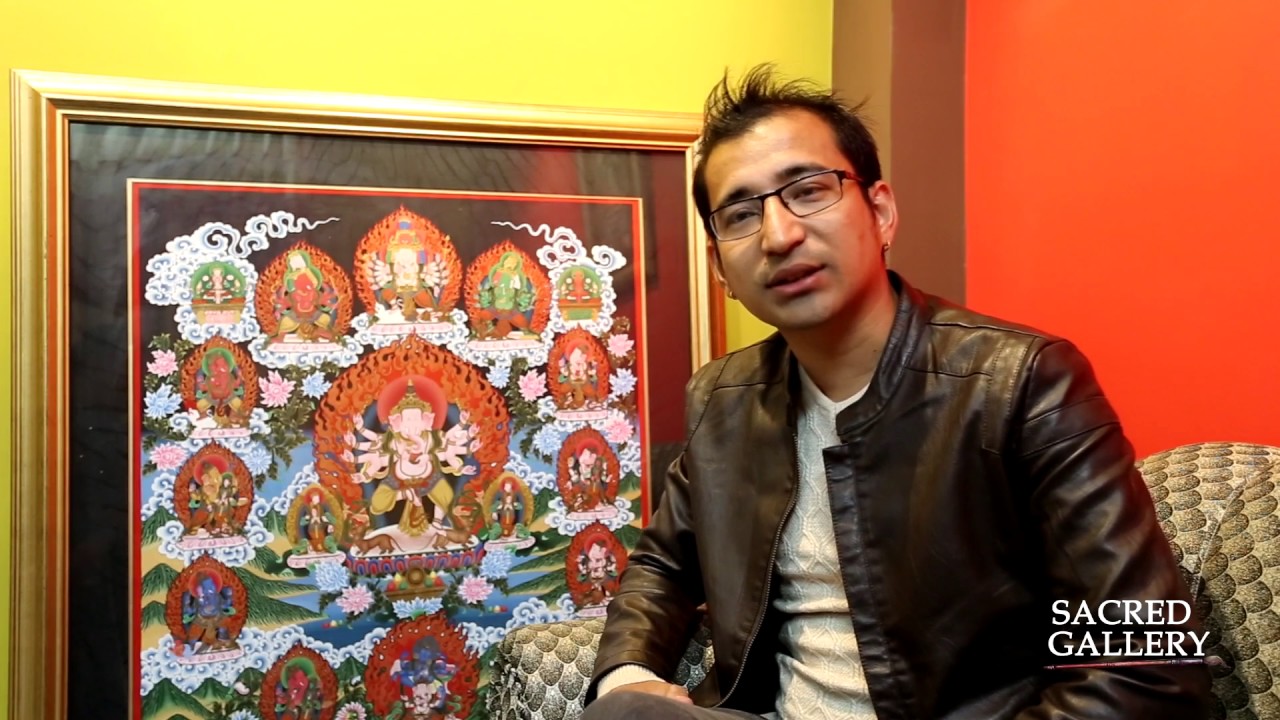The Mul Dhoka (Main Gate) or Baggi Dhoka (gate for horse drawn carriage), as the locals call it is probably the only one of this size and dimension in Nepal. The gateway leads to the famous Ranaujireshwori Bhagawati temple, regarded as the guardian deity of Tansen , and to the Tansen Durbar Square (palace premises) which since 1958 till 2005 accommodated various district level government offices.
After the infamous Kot Massacre of fourteen September 1846 in one of the Royal courtyards of Kathmandu Jung Bahadur Rana seized absolute power in Nepal thus starting an autocratic Rana family rule in the country that lasted for 104 years until 1951. Many of his rivals were either killed/executed and their title & property forfeited/confiscated. He was later made the Prime Minister & Commander in Chief of Nepal by the then King.
In 1850 one of jung Bahadur’s brothers Badri Narsingh Kunwar, alleged of plotting his assassination (when on a state visit to Europe) was consequently sent into exile as captive to Allahabad fort, India until he was granted amnesty after 2 years on request of Jung Bahadur’s mother. He later helped his brother prime minister a great deal during Nepal-Tibet war in 1854-1855 & In successfully quelling the famous 1857 Mutiny in Indian Army on request of then British Government of India. In 1854 Badri Narsingh’s 14 year-old son Kedar Narsingh Kunwar was appointed as Tainathwala (Governor) of Tansen, Palpa.
This north facing gate (12X30’size) was commissioned by Badri Narsingh Kunwar around 1854-1873 when he was his son’s patron in Tansen. The gate is said to resemble the Allahabad Fort in which he was held captive. Undoubtedly, the metal spikes on the doors give it the look of a fort-like-entrance. However, to the overall Mughal-architectural-style of the gate, has been added the traditional Nepali pagoda style sloped terracotta roofing with 3 lined up stone finials (Gajura) to the top symbolizing the protective Trident (Trishul) concept of the Hindu Trinity Brahma (Creator) Bishnu (Preserver) & Shiva (Destroyer) as per their respective cosmic functions. The several holes on top were possibly meant for cross ventilation against strong winds rather than for defense purpose. Two overlooking stone sculptures of a pair of lions, “Bahan” or conveyance of Hindu goddess Bhagawati, guard the front gate from two stone monoliths on either sides of the gate whereas, the Hindu auspicious deities Ganesh and Kumar are respectively seated on similar monoliths at the rear. It has a rectangular stone base and the huge door is kept locked with thick wooden crossbars which go right inside the holes on both sides of the stone wall.
Traditional adhesive mixture (red brick powder & lime powder) called “Bajra” or “Surki” (mortar) by the locals along with black lentil paste and molasses may have also been used for the construction. This gigantic gate has survived two major devastating earthquakes of fifteen Jan, 1934 & that of 25th April, 2015.
This central landmark of Tansen however, was slightly damaged in a rebel attack on the Tansen Palace at mid-night of 31th January 2006 during the final days of the insurgency which lasted in the country from 1996 to 2006. The gate was renovated a year later.
For daily pedestrians a small door within this gate is used whereas, the entire doorway is opened just once a year during the famous chariot festival of Goddess Ranaujireshwori Bhagawati (the biggest religious gathering in west Nepal) in the month of June every year. This festival marks the victory of Nepali troops over the invading East India Company during the famous Anglo-Nepal war at Jit Gadhi in Butwal in 1814-1816.
Post Script : However, Some senior citizens of Tansen are of opinion that the Mul Dhoka was reconstructed to its present size by than General Khadga Shamsher JBR (1891-1902) in order to enable his horse-drawn carriage (Baggi) to pass through. Hence the name “Baggi Dhoka” as it was called by the then locals.
Inscription & Construction by
Tansen Guthi, Kathmandu Date of Erection: 20th June 2015, Saturday
Photos: Let’s color Palpa
